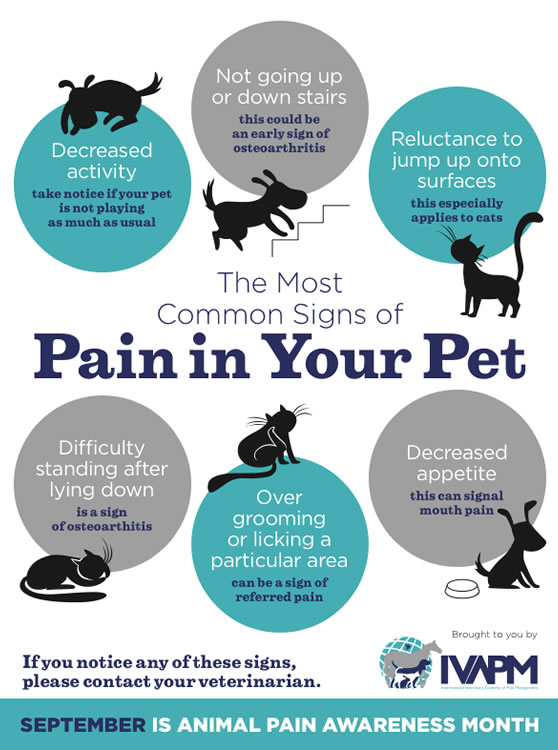As part of pet pain awareness month, we published an article earlier this month about identifying and managing pain in members of your fur family. In this second installment, we’ll share a handy infographic to help identify pain in cats and dogs and include the American Animal Hospital Association’s article summarizing its guidelines in layman’s terms.
 Pain Management Approach for Senior Companion Animals:
Pain Management Approach for Senior Companion Animals:
The Heaven at Home team takes a “multimodal” approach to helping manage pain in palliative pets. We are firm supporters of the AAHA/AAFP Pain Management Guidelines for Dogs and Cats, and subscribe to the “Continuum of Care” philosophy inherent in it. This means that pet parents and routine care veterinarians are part of the pain management planning process and that pain management should include anticipation, early intervention and evaluation.
During home visits, one of the team’s veterinarians will evaluate your pet’s condition and assess things that can be changed in the home environment to help your pet stay a part of the family. They will review records from your routine care veterinarian if available, and give you pain assessment guidelines so that you can also monitor and rate your pet’s pain behaviors. Together, we then develop a pain management plan for your pet. The plan may include a number of elements depending on the underlying cause of pain, which could be from arthritis, cancer, or any number of life-limiting illnesses. Read the rest of this entry »
 It’s a tough subject, but our companion animals age faster than we do. It’s hard to see them suffer, and even harder to imagine life without them. What if in their final chapter you could reduce their pain? What if, when the time was right, they could end their life story in the comfort of their favorite place, with the people they love?
It’s a tough subject, but our companion animals age faster than we do. It’s hard to see them suffer, and even harder to imagine life without them. What if in their final chapter you could reduce their pain? What if, when the time was right, they could end their life story in the comfort of their favorite place, with the people they love?
 Pain Management Approach for Senior Companion Animals:
Pain Management Approach for Senior Companion Animals: